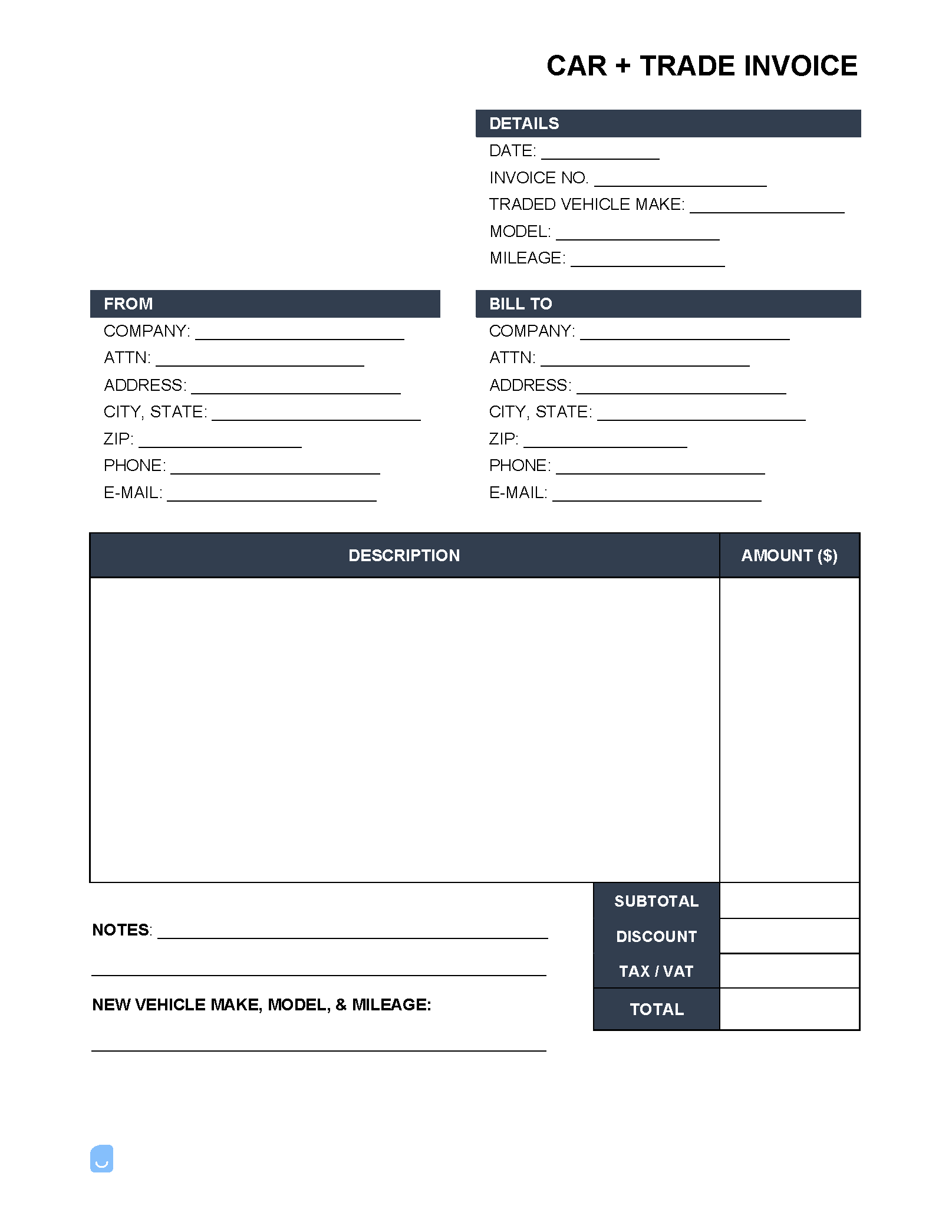A car trade invoice is used for billing a buyer who purchases another vehicle by trading their current car, plus cash. This may be used for new or used vehicles. Most invoices are required to be paid within five (5) business days. If the seller receives another offer, they are usually allowed to accept unless the buyer had earnest money holding the vehicle. Once the buyer completes the purchase, the invoice will be marked as paid, acting as a purchase receipt. The parties should authorize a bill of sale document so the new owner can register the vehicle with the DMV.
The Trade-In Process
On the surface, trading in a vehicle may seem like a confusing process. However, taking the process one step at a time and approaching it with patience can result in a smooth, non-stressful deal. The following are the recommended steps for trading in a motor vehicle at a used or new car dealership.
Step 1 – Find the Car’s Value
An owner can’t expect to negotiate a price with a dealer if they don’t know the fair value of the vehicle themselves. To get a rough estimate of their vehicle’s worth, two (2) online tools can be used. The first is Kelly Blue Book’s car valuation tool. The second is JD Power’s database of new and used car values.
Step 2 – Determine the Car’s Financial State
Does the car have any outstanding debt? Is it currently being financed? If so, does the vehicle’s debt exceed its current value? This is called “negative equity” and can add another layer to the trade-in process. For vehicle owners that currently have a car with negative equity, they generally have three (3) options:
-
-
- Think about selling your vehicle privately, as this can garner a far higher price than what a dealer would be willing to pay for it.
- Trade-in the vehicle and pay the remaining loan balance off immediately. This is the best option as it ensures the vehicle owner is no longer underwater on their loan.
- Push the vehicle’s loan onto the new vehicle. Not recommended as it makes the new vehicle have negative equity, keeping the vehicle owner in the same situation as before.
-
Now that the vehicle owner understands their current financial status with their car, they can begin getting quotes from dealers.
Step 3 – Obtain Quotes From Dealers
Head to local dealers that offer trade-in purchasing (hint, they almost all do) and ask them to give an estimate for the vehicle. Better prices may be found by heading to dealers that specialize in the vehicle’s make. If the owner is planning on purchasing their new vehicle at the place they are trading their vehicle to, this should be factored into the price, as a dealer should offer a considerably better price knowing they will be selling one of their vehicles. After getting several estimates, contact the dealer that offered the best price and begin the negotiation process.
Step 4 – Negotiate & Seal the Deal
Regardless of how amazing of a price the dealer offers, always counter. The dealer expects you to do this and will most likely offer five to fifteen (5 – 15%) more for the vehicle if the car owner is confident and doesn’t give in. Having said that, negotiation isn’t for everyone – if the deal works within the owner’s budget, taking the deal can provide a stress-free experience. Once a price has been agreed upon, sign any required paperwork, pay a downpayment (if required), and head out the door with the new vehicle.
Trade-In Price Factors
Two cars that may have the same specs on paper can sell/trade for far different prices. Why? Dealers take in a considerable number of factors to ensure they are paying the price for a vehicle that will (9 times out of 10) get a financial return for themselves. The common factors dealers take into consideration are the following:
- Condition of the vehicle: Rust, dings, paint chips, stains, smells, and other non-obvious signs of damage can severely impact a vehicle’s trade-in value.
- Features: Add-ons from when the vehicle was purchased new can considerably increase the vehicle’s worth from its base price. This can include heated seats, sunroof (s), fold-down TVs, mini-refrigerators, high-end wheels, and many more.
- Miles on the car: Although higher miles do not necessarily indicate a vehicle is in worse condition than a vehicle with fewer miles, those with higher miles are typically more inclined to breakdown.
- Demand for the vehicle: The more popular a vehicle brand and/or model, the easier it will be for the dealer to sell it. This, in turn, typically equates to getting a higher trade-in value.
